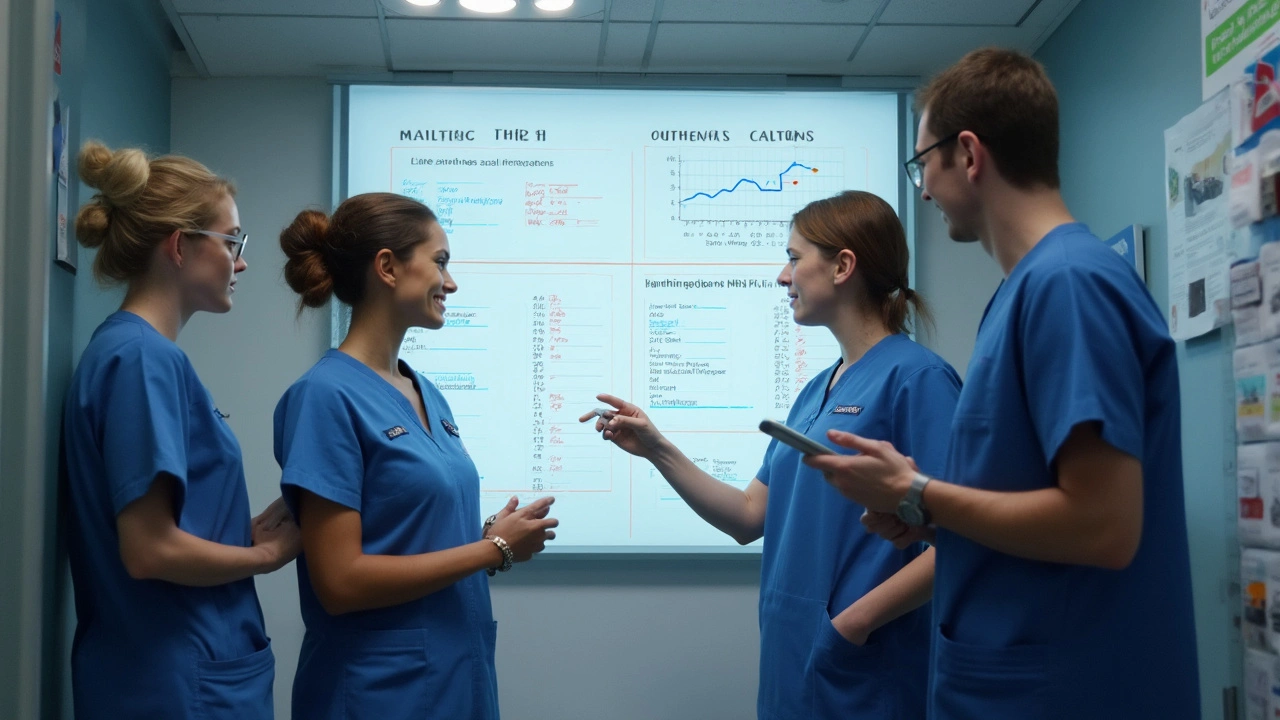Antidiabetic Medications: What You Need to Know
If you’ve been told you have diabetes, the first thing that pops up is a list of pills or injections. Those are the antidiabetic medications that help keep blood sugar in check. Every drug works a little differently, so knowing the basics can save you trips to the doctor and nasty side effects.
Common Classes of Antidiabetic Drugs
Biguanides (Metformin) – This is usually the starter drug for type 2 diabetes. It reduces how much sugar the liver makes and helps your body use insulin better. Most people tolerate it well, but a few get stomach upset, so taking it with food helps.
Sulfonylureas (Glipizide, Glyburide) – These push the pancreas to release more insulin. They work fast, but they can cause low blood sugar (hypoglycemia) if you skip meals. Start with a low dose and adjust based on how you feel.
DPP‑4 Inhibitors (Sitagliptin, Saxagliptin) – These block an enzyme that breaks down a hormone that tells the pancreas to release insulin after you eat. They’re gentle on the stomach and rarely cause hypoglycemia, but they’re a bit pricier.
GLP‑1 Receptor Agonists (Semaglutide, Liraglutide) – Given as a weekly injection, they mimic a gut hormone that boosts insulin and slows digestion. They often lead to weight loss, which is a bonus for many with type 2 diabetes. Side effects can include nausea, but it usually fades.
SGLT2 Inhibitors (Canagliflozin, Empagliflozin) – These pills help kidneys dump excess sugar in the urine. They lower blood pressure and can protect the heart. Watch out for urinary infections and stay hydrated.
Insulin – When oral meds aren’t enough, doctors add insulin. There are many types: rapid‑acting, short‑acting, intermediate, and long‑acting. Insulin is powerful but requires careful timing with meals.
How to Choose the Right Medication
First, think about your blood‑sugar numbers and how often they spike. If you’re just a little high, Metformin alone might do the trick. If you’re already on Metformin and need extra help, adding a second class—like a DPP‑4 inhibitor or an SGLT2 inhibitor—can fine‑tune control.
Second, consider your lifestyle. Do you prefer a daily pill or a once‑weekly injection? Do you have kidney issues? Some drugs, like SGLT2 inhibitors, aren’t recommended if kidney function is low.
Third, look at side effects. If you’ve had trouble with low blood sugar in the past, avoid sulfonylureas and choose a drug that has a lower hypoglycemia risk, such as DPP‑4 inhibitors or GLP‑1 agonists.
Finally, talk costs with your pharmacist. Brand‑name GLP‑1 agonists can be expensive, but many insurers cover them if you meet certain criteria. Generic versions of Metformin and sulfonylureas are usually cheap.
Whichever drug you end up on, remember that medication is only part of the plan. Eating balanced meals, moving a bit each day, and checking your blood sugar regularly make the meds work better. If something feels off—like frequent dizziness, unexpected weight loss, or stomach pain—call your doctor. Adjusting the dose or switching to another class can solve most problems.
Bottom line: antidiabetic medications come in many flavors, each suited to different needs. Knowing the basics helps you ask the right questions, avoid surprises, and stay in control of your diabetes. Keep this guide handy the next time you discuss treatment options with your healthcare provider.
Warfarin and Type 2 Diabetes: Navigating Complex Drug Interactions for Better INR Control
Warfarin and type 2 diabetes often collide in everyday clinical practice, and the drug interactions can send INR readings on a wild ride. This article digs deep into how antidiabetic medications impact warfarin therapy and what clinicians need to watch for. You'll get real-world strategies for managing INR fluctuations, plus tips to help keep things stable for your patients. Learn about which medications present the biggest challenges and discover straightforward solutions you can use in your next clinic session. Perfect for doctors, pharmacists, and any healthcare professional juggling these two chronic conditions.
Learn more...